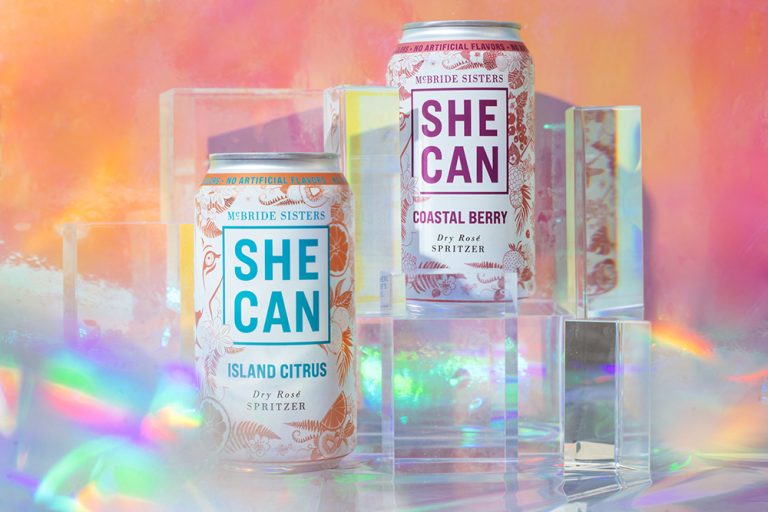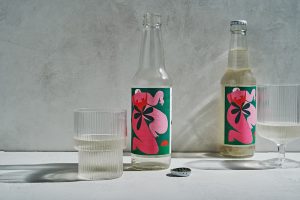
Everyone in this room has heard the doom and the gloom of the industry, drinking down per capita,” said moderator Susan Owen at the beginning of a breakout session on alternative wine packaging at the Unified Wine and Grape Symposium held in Sacramento in January. “I’m not going to go down that route; I like to look at things as an opportunity. How can we take a potentially challenging situation and make it positive to our industry?”
Owen, director of sales at G3 Enterprises, a wine packaging company, reported that although Gen Z and millennials account for 26% of the drinking population, they spend 50% of the total amount on premises.
“They want to be out,” she explained. “They want to be in restaurants, they want to be in bars. They want to drink wine, maybe at a music festival, maybe at a sporting event, maybe at an art hop. They want to be out. They’re also not drinking like those of us in this room drink, or maybe not like their parents or maybe not like their grandparents, maybe not around the dinner table with the traditional 750ml glass bottle. They’re looking for new ways to consume.”
Owen presented a survey result that found 19% of Gen Z drinkers are willing to embrace a new package format. “So, if we are looking at ways to bring people in, we already know that 19% are open to looking at maybe a crown cap bottle, a capsule-less wine bottle, a can, a single-serve package that they can put in their backpack on the way to the mountains, on a bike ride or to the beach,” she said.
“The wine industry has historically been White Anglo-Saxon Protestant,” she continued. “It is our job to bring in new cultures, new races, new genders, new ages. Currently today, Hispanics and Blacks account for about 28% of legal drinking age, with a strong preference toward spirits and beer.
“There’s an opportunity to grab a bigger piece of the market share, to pull a drinker from a spirit or from beer,” she said.
She also noted that “90% of Gen X consumers are willing to spend an extra 10% for more sustainable products.”
Owen asked how the wine industry can take advantage of the new legal drinking age market to get them to choose wine over other options, such as seltzer, ready-to-drink spirits, hard cider, cocktails and beer.
“Let’s look at alternative and new packaging as a runway to reach new consumers,” she said. “Open your minds. We can’t continue what we’ve always done and expect different results.”
Owen addressed what she called “the elephant in the room.”
“Glass is good,” she said. “Nobody in the room has the goal of saying anything negative or nefarious about packaging in glass bottles. Glass is a proven packaging material. We know it holds quality. We know it’s good for aging, but we have new people we’re trying to target. So, glass reaches a very large segment in the legal drinking age population, but we still have a big segment that we haven’t been able to penetrate.
“The idea is to look beyond the successes that we already have and find ways to succeed in an ever more increasingly difficult environment,” she said. “People have choices.”
Results of Alternative Packaging
Libby Enright, director of winery operations for McBride Sisters Wine Company, talked about the company’s SHE CAN and Black Girl Magic lines of canned wines.
“The [SHE CAN] brand is very unique,” said Enright. “It’s meant to help empower women in the wine industry as well as putting premium wine in a can.
“It was definitely targeting the younger generation looking for a more portable, all-occasion wine,” she said, adding that the design of the can is “something you want to keep looking at and touch and engage with.”
William Allen, proprietor and winemaker at Two Shepherds Winery, has experimented with different-sized bottles as well as “naked bottles.”
“One thing my tech background has taught me is you fail spectacularly 90% of the time and hit a home run 10%, so just keep trying,” he said.
During the pandemic, the company cancelled its bottling, so Allen “had time to play.” He used that time to launch a sparkling red wine in a can.
“Cans injected a new buying revenue stream from our existing customer base,” he said. “Also, I find them a little less panicky to ship during the summer. We can put them in the fridge. We can ship them out.”
He added that the chilled cans helped the company avoid its annual summer decline in wine sales in addition to reaching younger customers.
“Millennials have been our customer base,” he said. “We sell primarily in urban markets. We can’t get wine down to L.A. fast enough, also in New York, Seattle and other large markets.”

He also credited the use of creative labels as helping to increase sales.
Maddy Houghton, CFO at Archer Roose, said founder Marian Leitner-Waldman started her company “around a dining room table, looking for a way to experience a really nice, quality glass of wine in a sustainable format, in a single-serving format.”
This approach has opened doors for the company.
“We’re able to get our products in revenue streams that are not traditional to the wine industry,” Houghton said. “Transportation, for example. We’re able to get on planes. We’re not a heavy product so that saves on the airlines’ cost.
“We’re able to reach a demographic of consumers that doesn’t want to open a really expensive bottle of wine and feel guilty about wasting it because they don’t want to drink the whole thing,” she added.
“We are big on experimentation and creativity” said Martha Stoumen, owner of Martha Stoumen Wines, which in addition to traditional wine packaging, produces wine in lightweight glass and packettes.

“In our portfolio, our lowest priced wine is currently around $30 a bottle,” she said. “A lot of our spending is in farming. We only work with organic grapes. So, we were trying to think of ways to have a lower entry-level product for folks.”
Stoumen said the company’s single-serving bottles attract people who want less alcohol, perhaps because of the time of day or type of gathering.
“The most powerful marketing is getting wine in a consumer’s hand,” she said. “We were a small business and could never sponsor events before, and events are where young people often are,” she said. “With our spritzer production, we’ve finally been able to start doing that. It’s definitely opened up new consumers to us.”
Allen reported an increase in online sales of the traditional-size bottles of Two Shepherds wine from people initially looking to order cans.
“We get conversion back and forth,” he said.
“The cans offer an entry-level trial to our other brands that are on nearby shelves,” said Enright, adding that the SHE CANS also attract customers to the McBride Sisters website.
“Once we get people to try our products, they keep coming back,” said Houghton. “It’s a behavioral thing.”
Recommendations and Concerns
Houghton advised wine producers to maintain “a long partnership with wine grape growers” to maintain quality and consistency.
She also said that companies selling wine in alternative packaging don’t do enough to speak directly to their customers. She recommended that companies have an active social media presence.
Allen stressed the importance of wineries offering the same quality of wine in their cans as in their bottles.
“Labor is a huge thing when you’re thinking about alternative packaging,” Stoumen said, adding that new equipment is also a financial consideration.
Allen expressed concerns about the cost to distribute wine in containers that are lighter than traditional glass bottles.
“Distribution companies are saving money on distribution, but are charging the same,” he said.






